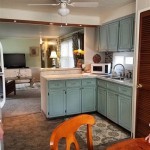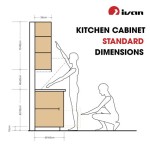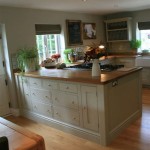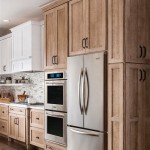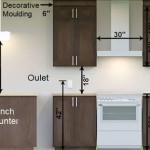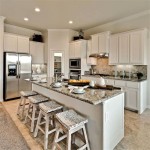Wainscoting Above Kitchen Cabinets: An Essential Guide
Wainscoting, a decorative wall treatment, can elevate the aesthetic appeal of your kitchen space. Extending wainscoting above kitchen cabinets adds a touch of elegance and sophistication while offering practical benefits.
Before embarking on this project, understanding the essential aspects of wainscoting above kitchen cabinets is crucial. Here's a comprehensive guide to help you navigate the process:
Height and Placement
The height of the wainscoting will depend on the overall kitchen layout and the existing cabinetry. Generally, aiming for a height of about 12-18 inches above the cabinets ensures a balanced and visually pleasing effect.
Proper placement is essential to achieve a seamless integration. The wainscoting should align with the top of the backsplash or the cabinet molding, creating a cohesive transition.
Material Selection
The choice of material for the wainscoting depends on personal preference and kitchen style. Popular options include:
- Beadboard: Classic and versatile, beadboard adds texture and warmth.
- Wood: Natural and durable, wood offers a timeless and sophisticated look.
- PVC: Moisture-resistant and low-maintenance, PVC is an excellent choice for kitchens prone to spills and humidity.
Design Details
The design of the wainscoting can be customized to complement the kitchen decor. Consider the following elements:
- Paneling: Choose from square or rectangular panels to add depth and interest.
- Cap Molding: A decorative top molding creates a finished and polished look.
- Base Molding: The bottom molding provides a smooth transition to the wall or floor.
Practical Benefits
Besides its aesthetic appeal, wainscoting above kitchen cabinets offers practical benefits:
- Protection: The wainscoting protects the wall from spills, splashes, and steam.
- Durability: The added layer provides durability and reduces damage to the kitchen walls.
- Insulation: Wainscoting can act as an additional layer of insulation, reducing heat loss.
Installation
Proper installation is crucial for a successful project. If you lack experience, consider hiring a professional. The general steps involved are:
- Measure the area and cut the wainscoting panels to size.
- Install the base molding along the wall.
- Attach the panels to the wall using nails or adhesive.
- Install the cap molding and any other decorative elements.
- Caulk and paint the wainscoting.
Maintenance
Maintaining wainscoting above kitchen cabinets is relatively simple. Regular cleaning with a damp cloth will suffice. For wood wainscoting, periodic touch-ups or refinishing may be necessary to preserve its finish.
Wainscoting above kitchen cabinets can transform your space into a stylish and functional haven. By understanding the essential aspects, you can create a design that complements your home's aesthetic while enjoying its practical benefits.

Turning Fifty Better After Kitchen Soffit Above Cabinets

Raised Panel Wainscoting Design Ideas

Seeded Glass Butler Pantry Cabinets With Wainscoting Backsplash Transitional Kitchen Dining Room

Kitchens Wainscoting Design Ideas

Wood Soffit Adding To Kitchen Cabinets With Wainscoting Diy Renovation Trim

Beadboard Kitchen Cabinets Everything To Know

Beadboard Kitchen Cabinets Everything To Know

23 Charming Beadboard Cabinets That Dress Up Your Home

Marley And Lockyer October 2008 Beadboard Kitchen Wainscoting Home Kitchens

Beadboard Kitchen Cabinets Everything To Know
Related Posts

